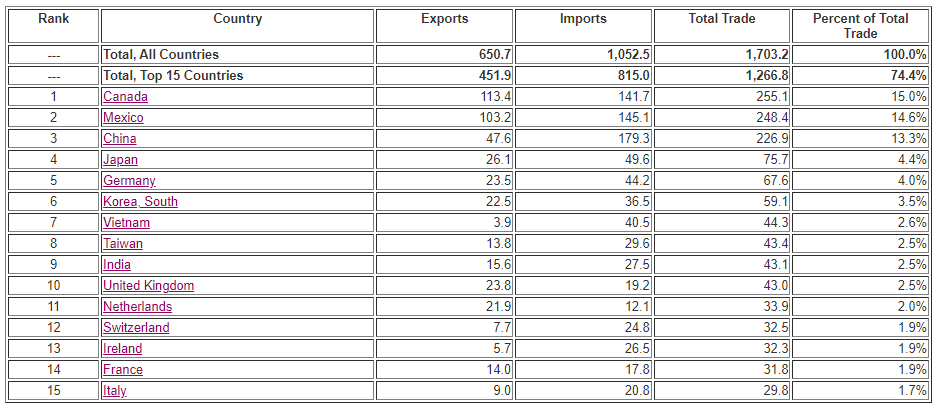Canada, Mexico, China, Japan and Germany ranked, in descending order, as the top trading partners of the United States in the first four months of 2022, considering only goods, not services.
This is how their participation in trade with the United States (imports plus imports) turned out: Canada (15%), Mexico (14.6%), China (13.3%), Japan (4.4%) and Germany (4%), according to data from the Census Bureau.
In the economic framework, US real GDP growth slowed in the first quarter of 2022, after a rapid acceleration of 6.9% in the last quarter of last year.
Top Trading Partners – April 2022
Data are goods only, on a Census Basis, in billions of dollars, unrevised

The absolute decline in real GDP was driven by sharp changes in the contributions of net exports and inventory investment, two components that contributed strongly to growth in the fourth quarter.
However, according to the Federal Reserve, underlying private final demand accelerated in the first quarter relative to the second half of 2021.
At the same time, added the Federal Reserve, household consumption and business and residential investment grew at healthy rates despite a context that included a resurgence of Covid-19 cases of the Omicron variant, expectations of tightening monetary policy and the Russian invasion of Ukraine and the consequent effects on confidence and oil and food prices.
Trading partners
According to the advance estimate, real GDP decreased 1.4% at an annual rate in the first quarter of 2022, after an unusually fast increase of 6.9% in the last quarter of 2021.
The slowdown in the first quarter reflected stronger domestic demand for imports, higher prices and weaker demand for US exports, slower growth in private inventories and higher prices for government spending.
By contrast, private domestic demand strengthened in early 2022.
Real private domestic final purchases (PDFP), the sum of personal consumption, commercial fixed investment and residential investment, accelerated to an annual growth rate of 3.7% during the first quarter, after advancing of 2.6% in the fourth quarter.
By excluding international trade, government spending and the volatile inventory component, PDFPs are typically a stronger indicator of future GDP increases and represent the private sector’s ability to generate self-sustaining growth, according to the Federal Reserve.
In recent years, the same five countries referred to have remained the largest trading partners of the United States, although with Canada, Mexico and the United States competing for first place.
![]()

